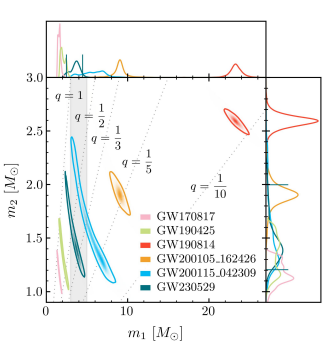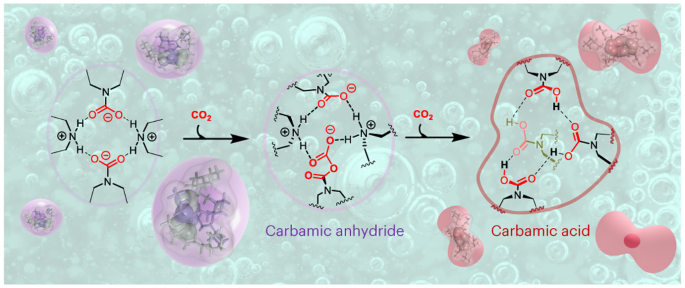2024-04-08 カリフォルニア工科大学(Caltech)
<関連情報>
- https://www.caltech.edu/about/news/unusually-lightweight-black-hole-candidate-spotted-by-ligo
- https://arxiv.org/abs/2404.04248
2.5~4.5M⊙のコンパクト天体と中性子星の合体による重力波の観測 Observation of Gravitational Waves from the Coalescence of a 2.5−4.5 M⊙ Compact Object and a Neutron Star
The LIGO Scientific Collaboration, the Virgo Collaboration, the KAGRA Collaboration
arXiv Submitted:on 5 Apr 2024
DOI:https://doi.org/10.48550/arXiv.2404.04248

Abstract
We report the observation of a coalescing compact binary with component masses 2.5−4.5 M⊙ and 1.2−2.0 M⊙ (all measurements quoted at the 90% credible level). The gravitational-wave signal GW230529_181500 was observed during the fourth observing run of the LIGO-Virgo-KAGRA detector network on 2023 May 29 by the LIGO Livingston Observatory. The primary component of the source has a mass less than 5 M⊙ at 99% credibility. We cannot definitively determine from gravitational-wave data alone whether either component of the source is a neutron star or a black hole. However, given existing estimates of the maximum neutron star mass, we find the most probable interpretation of the source to be the coalescence of a neutron star with a black hole that has a mass between the most massive neutron stars and the least massive black holes observed in the Galaxy. We estimate a merger rate density of 55+127−47 Gpc−3yr−1 for compact binary coalescences with properties similar to the source of GW230529_181500; assuming that the source is a neutron star-black hole merger, GW230529_181500-like sources constitute about 60% of the total merger rate inferred for neutron star-black hole coalescences. The discovery of this system implies an increase in the expected rate of neutron star-black hole mergers with electromagnetic counterparts and provides further evidence for compact objects existing within the purported lower mass gap.



